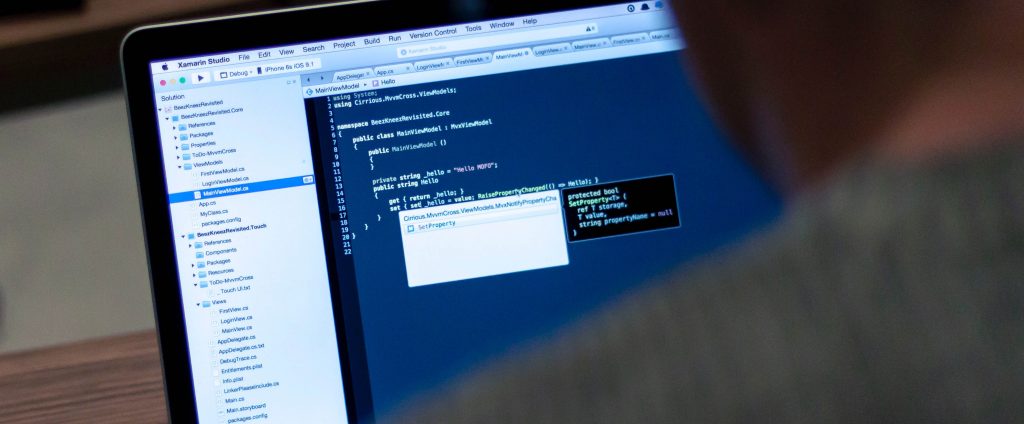Top 7 Software Development Trends In 2022
February 14, 2022

Introduction
Due to the Covid pandemic, the current market situation is extremely difficult for enterprises. Businesses are facing enormous problems, however, technology is assisting them in maintaining their market ranking and generating revenue.
Software development trends change frequently, we can anticipate that some of the most popular ones will continue to dominate in 2022. Businesses will need to adapt to these changes if they want to grow. In this year, things are getting a little unexpected as what looked to be a viable software development trend may no longer be so.
Here are the top seven software development trends that we feel would be there in the year 2022.
1. Automation

Here, two important things come together:
- Organizations have reduced spending and focused on operational efficiency as a result of the economic uncertainty of 2021.
- Despite budget cuts, spending on digital transformation has surged as businesses alter their procedures, services, and business models more quickly.
In software development, repetitive processes will be automated. Automation will be an unavoidable trend in the software development space, thanks to AI, cloud computing, robotics, and other developing technologies. For example, a large number of software development companies are implementing (and many more are considering) robotic process automation (RPA) techniques to increase efficiency. The goal of RPA innovation is to handle redundant and repetitive jobs that are better suited to machines than human labor. The most significant benefit of using RPA into software development is that it allows individual developers to devote more time to the creative part of the process.
2. Getting Ready For The “Digital Wall”

The volume of data produced is growing at a breakneck speed. Data is a valuable asset for businesses, as it serves as the foundation for digital services, artificial intelligence (AI), natural language processing (NLP), deep neural networks, and much more. These technologies also need a lot of computing power. Businesses are getting to a point where their storage capacity and computing systems can no longer keep up with data growth and technological improvements.
This is referred to as the “digital wall” by Gartner. Organizations will begin to test novel storage and computation technologies, such as DNA storage, glass storage, neuromorphic computing, and extreme parallelism, in order to keep up with competitors and market demands.
According to Gartner’s Top Strategic Technology Trends for 2022, “There is a great amount of ‘collective’ debt among organizations…. The root of the problem is a complex and costly collection of business processes supported by a patchwork of technologies that aren’t always efficient, lean, connected, consistent, or explicit.” Therefore, IT teams will face a challenge in integrating new technologies and reliably managing big data across heterogeneous environments over the next two to three years.
3. Fintech

Fintech apps are in high demand since they provide significant benefits to both users and financial organizations. Fintech is transforming our connection with banks and traditional financial institutions by lowering entrance barriers and shifting mindsets. The technology enables the development of traditionally unprofitable areas of banking, such as retail banking and low-margin business models, by addressing underserved regions of banking. Customers will be more trusting of you if you are more inclusive. All of this occurs with the goal of providing the best possible user experience to clients, fueling the creation of new fintech app tech trends.
As the fintech market is likely to expand, fintech apps will face stiff competition. In this case, defining the killer feature will set your app apart from the competition, hence attracting prospective users to this service. Once you’ve decided on a function, stick with it from the beginning of the development process until the end.
4. Low-Code and No-Code Development
Building from the ground up or purchasing a ready-made solution? Because of LC/NC (Low Code/No Code), one of the biggest trends throughout software development, you may not have to make this choice in some cases.
You can build digital products using low and no code if you don’t have advanced coding skills. It can benefit both technical and non-technical specialists.
As the name implies, no code is the easier of the two. In a nutshell, a no-code platform is a drag-and-drop tool for creating basic apps. Solutions created with its assistance are not scalable or easily integrated with other tools, but they can be a viable option in times of urgency or scope constraints.
Low code is more sophisticated because it sits between no-code and conventional development methods. It follows the same constructor principle as no code, but a potential app can be customized using code. It significantly accelerates development because no basic code is required.
Common LC/NC applications include:
- Transactional systems; streamline minor repetitive tasks previously performed by humans
- Descriptive analytics and predictive analytics elements; website development; marketing automation (email marketing or ad trafficking);
- Configuration of software.
5. 5G Network

The 5G network has been in the works for quite some time, but communications experts are confident that it will be released this year and become one of the leading IT trends in 2022. For developers, this means that connection capability will improve significantly, and users are more likely to receive online offers from all over the world. It also implies faster mobile connection speeds, which are required for incorporating complex innovations such as machine learning or augmented reality into mobile apps.
This has the potential to increase revenue and reduce customer churn. 5G networks will be able to be virtually sliced to provide a variety of different service characteristics for various use cases. 5G promises to go even further, with low latency, high density, and greater reliability, bringing new use cases to the consumer and enterprise marketplaces. These functionalities will be critical in the delivery of new technologies such as automated driving, robotic surgery, and augmented reality applications (AR).
6. The Evolution of Personalization – Internet Of Behavior (IoB)
With the Internet of Behavior, software trends are expected to shift toward personalization. The Internet of Behavior, sometimes known as IoB, is a subset of the Internet of Things (IoT). IoB tracks and analyzes people’s behavior as they engage with apps and devices in addition to gathering data from gadgets.
While the Internet of Things has yet to acquire general acceptance, Gartner predicts that by 2023, 40% of the world’s population will be tracked. The information obtained by IoB is useful in creating a tailored user experience.
Startups may learn about IoB in action by looking at how YouTube personalizes video streams based on how consumers react. Similarly, Facebook uses the same strategy to display ads that are more likely to elicit user interaction.
7. Leverage The Right Experts With Software Outsourcing

More businesses are opting for software outsourcing rather than forming an in-house team. According to Delloite, cost reduction was highlighted by 70% of respondents as a primary motivation for outsourcing.
Startups, in particular, stand to benefit greatly from outsourcing their software development needs to a third-party firm. The move allows entrepreneurs to tap into proven expertise and knowledge without having to pay for employees or IT. In addition, if the firm founder isn’t ready to take on the CTO role, outsourcing is a better alternative than hiring freelancers.
Skype and Whatsapp, for example, outsource some of their development to third-party software companies. The change allows them to hire the best people for the job at a fraction of the expense of hiring in-house.
Summary
Software development is influenced by technology, consumer behavior, and other underlying variables. It holds a unique space in the history of any business. Many organizations rely on mobile app development companies to design, conceptualize, and develop high-quality apps. As the world has been flipped upside down by new software development practices, startups are better prepared to turn their ideas into apps if they have a better understanding of the latest software trends.
Keep reading about
LEAVE A COMMENT
We really appreciate your interest in our ideas. Feel free to share anything that comes to your mind.




